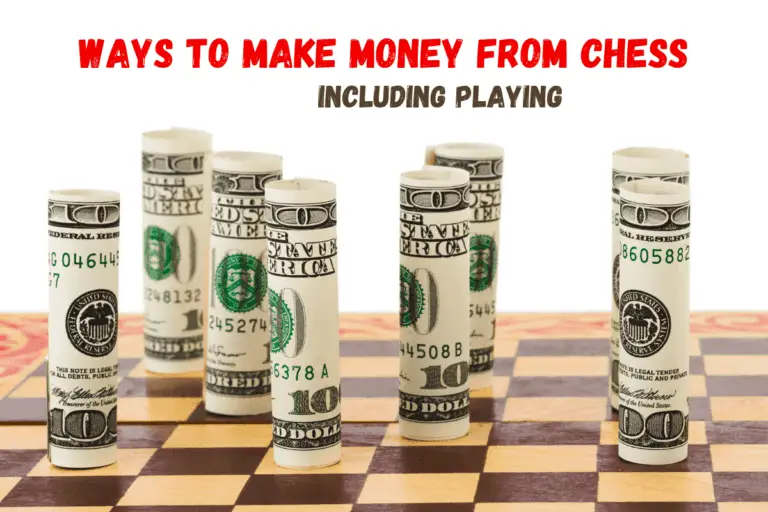How do Chess Ratings Work? – Explained in Simple Terms
⭐⭐⭐ Take 5 minutes to read and improve your chess game ➡️ : This article was first published on, and is Copyright of Chessquestions.com
For the vast majority of chess players, the Elo official rating system is the official figure used by FIDE and the United States Chess Federation to attribute scores and rating differences to chess competitors. It stands to reason a higher score means greater ability, but let’s take a deeper look into how chess ratings work, and for this post, the Elo system
Chess ratings are a representative value of a chess player’s ability in competitive matches subject to fluctuation based on results from matches against similarly rated players using the Elo system. Ratings increase and decrease on results based on the rating differences of the opponents.
For the vast majority of players, the Elo rating system is the official figure used by FIDE and the USCF to attribute scores and rating differences to chess competitors.
Let’s find out more.
How the Rating System is Worked Out
There are several factors attributed to the formula of working out a player’s actual rating and position in any given ratings table or list. Different federations use different mathematical formulas but all are a good representation of ability when applied in an official manner.
Chess scores are generally based on a model system called the Elo rating system, which was invented by Hungarian-American chess master Arpad Elo to distinguish different abilities and establish levels of players.
FIDE, the Federation International des Echecs (International Chess Federation in English), which is the worldwide chess governing body, uses this system. National chess organizations use it as well, as do popular online chess site like chess.com.
There are other chess rating systems but the Elo is the main one. Many of the other systems use the same principles as the Elo.
Other Chess Rating Systems
- Elo
- USCF
- Glicko
- USA ICCF
- Deutsche Wertungzahl
- Harkness
- Ingo
- Chessmetrics
- Universal Rating System
Complicated Formula
I’m not about to reel off reams of hypothetical scores based on the formula as set out by Elo, nor will I introduce the complicated math and algebra required to explain it further – Should you wish to delve deeper into the details, then I found this great little page which is a good resource.
In this system for measuring players’ strengths, points are awarded for wins and deducted for losses. Simple enough, but it gets more complicated. A player will win more points if he or she wins against a higher-rated player. Likewise, he or she would lose more points by losing to a player with an inferior score.
Put a different way, the Elo rating system rewards players for exceeding expectations and punishes them for falling below them. For example, a win against a much lower-ranked opponent, such as one with a 200 – 300 point differential, will not win many points. This prevents players from padding their performance ratings by playing easy competition.;
Win Probabilities
One advantage of the Elo rating system is it can provide an estimated probability of the outcome of a given chess game. Great if you are considering betting on chess matches. The difference between the ratings of the two players indicates the potential result; win, lose or draw.
Here is an example of how this works:
If a player is rated 50 points a stronger player above an opponent, it is determined that there is a 57.15% chance that they will win. If the difference is 100 points, then they have a 64% chance of winning. It stands to reason an equal performance rating means the players will have an equal chance of victory.
For a 150 point difference in rating, the odds are 70.3% that the higher-rated player will win and for 200 points, the chances are almost 76%. This means that if you play someone with an official rating of 200 points higher than yours, you are expected to win one out of four games against them.
It’s an ingenious system, but there is one more wrinkle to iron out; draws.
How to Draws Affect Chess Ratings?
A good number of chess games end in a tie, so how can we calculate the likelihood of that?
The first thing to note is that in a chess tournament 1 point is awarded to the winner of a game, and in a draw, each player receives an equal share so that both get a half-point.
For example, if you played 5 games in a tournament, won 2, drew 2 and lost one, you would have a final score of 3. 1 point for each win, which adds up to 2. 0.5 points for each draw, which adds up to 1 and no points for your loss. This gives a total of 3.
So how can we factor the likelihood of a draw into the Elo probabilities? Instead of looking at them as the likely outcome of each game, we can look at them as the likely score against a given opponent;over time. If players have an equal current rating the probability of one or the other winnings 50%.
Another way to read this is that their final score against one another will be 50% of the possible points. That could mean they have an equal amount ofwinsor losses against one another or they will draw. But either way, the score against that opponent should average out to 0.5 over time.
Provisional Ratings
Any provisional ratings at the completion of events will be confirmed at a point afterward. previous events are not necessarily taken into account as confirmed ratings are usually in place before the commencement.
Chess Rating Titles
Each average ratings level comes with a category. The higher categories come with cool titles that are endowed upon the player by FIDE or another chess governing body.
Players below 1200 are considered beginners. From 1200 to 2000 come the intermediates, the strong players. These are divided into four categories of 400 points each.
Above 2000 are where players receive titles beginning with Expert moving up to the ultimate ‘grandmaster’ title.
| Rating | Title |
|---|---|
| 2000 – 2199 | Expert |
| 2200 – 2299 | Chess Masters |
| 2300 – 2399 | FIDE Masters |
| 2400 – 2499 | International Masters |
| 2500 and up | Grandmasters |
The pool of players above 2700 don’t receive a formal title but are often known as super grandmasters.
At the time of writing, there are currently some 37 players with ratings above 2700
These are the players with the highest chess ratings
To attain the higher titles, you not only need a high rating, but you have to beat other players of that level in official tournament games and maintain that level for a period of time.





